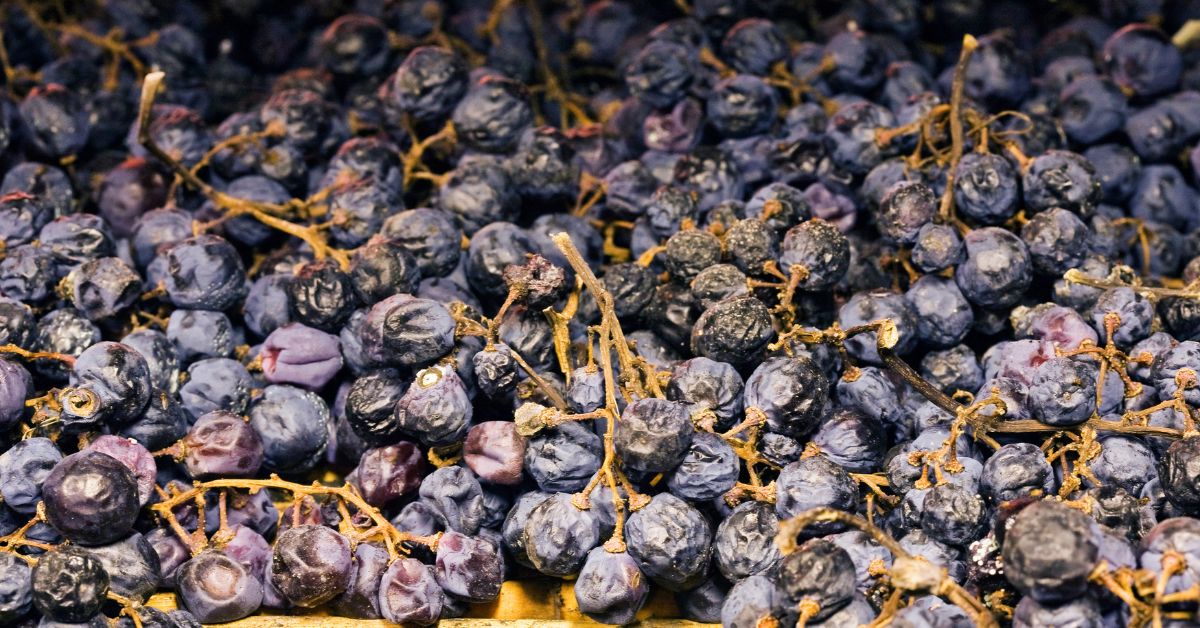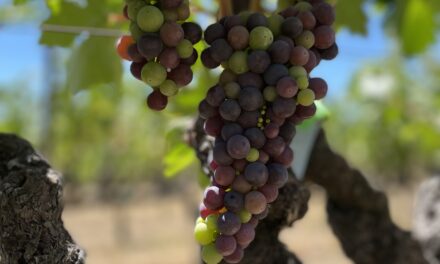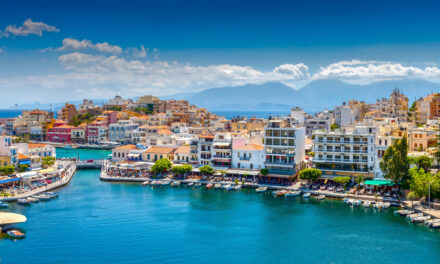Throw up your gesture al bacio and repeat: “appassimento, ripasso, amarone!”
Dubbed by Vinepair as “one of Italy’s most confusing wine regions,” the Veneto has some quirks. The region is the home of ancient styles of wine that continue to boggle our minds and entice our taste buds. The region’s claim to fame? Wine made from dried grapes.
Valpolicella
The Valpolicella wine region is located in the Veneto region of northern Italy, near the city of Verona. The appellation is only 240 square kilometers, but it is mighty; Valpolicella is renowned for producing some of Italy’s most celebrated and high value wines, third only to Chianti and Barolo. The viticultural history of Valpolicella dates back thousands of years, with evidence of grape cultivation and winemaking in the region since the Roman Empire. The region’s mild climate, hilly terrain at the foothills of the Alps, and well-drained soils provide excellent conditions for growing grapes.
The historical significance of Valpolicella as a winemaking region is closely tied to the city of Verona, which has a rich cultural and literary heritage. Verona is known for being the setting of Shakespeare’s Romeo and Juliet. The city has long been associated with wine, and Valpolicella wines have been enjoyed by locals and visitors alike for centuries. Today, the Valpolicella region continues to thrive, producing exceptional wines that showcase its unique terroir and winemaking traditions.
Valpolicella is primarily known for its red wines, firstly the Valpolicella Classico, a lighter red wine with vibrant fruit flavors and a lively acidity. This wine shares a name with its region, and pairs nicely with pepperoni pizza, red sauce pasta, and aged cheeses. The most famous wine of Valpolicella, however, is Amarone. This wine is made from dried grapes, a process known as appassimento, which concentrates the flavors and sugars in the grapes, resulting in a rich, full-bodied wine with intense aromas of dried fruit, chocolate, and spices.
Appassimento
Appassimento is a traditional Italian winemaking practice that involves drying grapes before fermentation, a process predominantly used in Valpolicella. Appassimento derives from the Italian word “appassire,” which means to dry or wither.
The appassimento process typically begins by selecting ripe and healthy grapes, often varieties such as Corvina, Rondinella, and Molinara for the Valpolicella region. These grapes are carefully harvested and then left to dry on special racks or straw mats for a period ranging from a few weeks to several months. During this drying phase, the grapes lose a significant amount of moisture, resulting in a concentration of sugars, flavors, and aromas.
As the grapes dehydrate, their flavors intensify, and the sugar content becomes more concentrated, which can lead to higher alcohol levels in the finished wine. Once the desired level of dehydration is reached, the dried grapes are gently pressed, and the resulting must undergoes fermentation.
The appassimento technique imparts unique characteristics to the wines produced. The resulting wines are typically rich, full-bodied, and have complex flavors of dried fruits, raisins, chocolate, and spices. Amarone della Valpolicella is one of the most renowned wines made using appassimento, known for its boldness, depth, and long aging potential.
Appassimento requires careful attention and meticulous winemaking skills to ensure the quality of the grapes throughout the drying process. It is a time-honored method that showcases the mastery of Italian winemakers in creating distinctive and highly prized wines that capture the essence of the grapes and the terroir in which they are grown.
Amarone
It all starts with a happy accident, as with most ancient winemaking innovations. Amarone was first crafted as a result of a fortuitous winemaking mishap. It is believed that a winemaker accidentally left a batch of Valpolicella wine to ferment for an extended period, leading to the development of a dry, full-bodied, and highly concentrated wine. This accidental discovery laid the foundation for Amarone as we know it today.
The production of Amarone is characterized by the appassimento method, in which the grapes—predominantly Corvina, Corvinone, Rondinella, and Molinara—are carefully selected and left to dry for an extended period, typically three to four months. This drying process concentrates the sugars, flavors, and aromas within the grapes. Following the drying phase, the grapes are fermented, resulting in a wine with remarkable depth and complexity.
Amarone is revered for its distinct tasting notes and aromas. On the palate, it often exhibits rich flavors of black cherries, dark berries, plums, figs, and raisins, accompanied by notes of dark chocolate, tobacco, leather, and spices. The wine’s high alcohol content and full-bodied nature provide a robust and opulent mouthfeel. Amarone’s notable characteristics include a firm tannic structure, vibrant acidity, and a long, lingering finish.
Throughout history, Amarone has experienced a surge in popularity. In the mid-20th century, Amarone began to gain recognition as a premium wine, both domestically and internationally. Its reputation grew steadily, and it achieved DOC status in 1968. Since then, Amarone has garnered acclaim for its exceptional quality and aging potential.
Today, Amarone continues to be highly sought after and celebrated. Its reputation as a prestigious and collectible wine has propelled its popularity worldwide. Amarone has found its place among the finest wines on international markets and is cherished for its ability to age gracefully, often improving over decades of cellaring.
Pairing Amarone is all about leaning into its decadence. Complementary pairings include chocolate truffles, creamy black truffle pasta, or braised short rib– but just about any slow cooked red meat dish will do.
Amarone stands as a symbol of Italian winemaking excellence, representing the rich heritage, artistry, and dedication of the Valpolicella region.
Ripasso
The production of Ripasso began in the mid 20th century as a way to enhance the flavor and complexity of wines made in the Valpolicella region. It involves a unique winemaking technique wherein the wine is re-fermented with leftover grape skins, lees, and sediment brought in from Amarone wine production.
The history of Ripasso dates back to the 1960s when winemakers in Valpolicella discovered that by adding the lees from Amarone to other wines, they could create a wine with great depth of character at a fraction of the cost of the appassimento technique used in Amarone production. The re-fermentation process allows the Valpolicella wine to absorb additional flavors, tannins, and aromas from the Amarone lees, resulting in a wine with increased structure and complexity. “Ripasso” in Italian means “go over again” and is often referred to as “baby Amarone.”
Ripasso wines are known for their rich, velvety texture and flavors that combine the fruity characteristics of Valpolicella with the dried fruit, spice, and chocolate notes reminiscent of Amarone. Common tasting notes include ripe red and black fruits, cherry, plum, tobacco, leather, and hints of vanilla. It typically exhibits medium to full body and moderate acidity.
It pairs beautifully with red meat or tomato-centered dishes, including burgers, stakes, pasta bolognese, or even pizza.
Over the years, Ripasso has gained popularity both locally and internationally. Its approachable style, affordable price-point, and versatile food-pairing capabilities have contributed to its success. Ripasso has carved its own niche within the Valpolicella wine family, offering a middle ground between the lighter Valpolicella and the richer, more concentrated Amarone.
While Ripasso and Amarone share similarities, they have distinct characteristics. Amarone is made entirely from dried grapes using the appassimento method, resulting in a more concentrated, full-bodied wine with higher alcohol levels. Ripasso, on the other hand, is made by re-fermenting Valpolicella on the Amarone lees, giving it a touch of Amarone’s richness and complexity while retaining the characteristics of a Valpolicella wine.
Today, Ripasso continues to be a beloved choice for wine enthusiasts seeking a well-rounded and flavorful wine from the Valpolicella region. Its popularity has grown steadily, and it has become recognized as a distinct style that showcases the winemaking expertise and unique terroir of the area.
Where to Find the Raisin Wine of Italy
Looking to try some Valpolicella wine? We have a few bottles for you to check out, all at amazing price points, of course. Your best wine education comes through tasting, so taste away friends!












